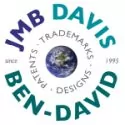- in South America
- in South America
- in South America
- within Technology topic(s)
"Know your invention." It is a simple statement, and one that I often repeat in introductory seminars on patenting. For a Patent Applicant (and her Patent Attorney), a clear understanding of the invention to be claimed is essential both for determining what features of the invention must be recited in one or more claims, and also what and how those features must be described in the claim-supporting specification. For some inventions however, the patentable technological advance lies not so much in those features that are present in the claimed invention, but rather in those that are excluded from it. Recently, in Novartis Pharmaceuticals Corporation v. Accord Healthcare, Inc. (Novartis) the US Court of Appeals for the Federal Circuit (CAFC) provided a gentle reminder of the description required for the specification to support such exclusionary (negative) claim limitations.
Novartis was heard by the CAFC previously, and with a different outcome from which the current case appealed. In the current decision, the court held Novartis' US Patent No. 9,187,405 (the '405 Patent) to be invalid for lacking sufficient descriptive support in the specification for a limitation that was added during patent examination, and which was critical for patentability.
The '405 Patent describes treatments for relapsing-remitting multiple sclerosis (RRMS) by administration of the immunosuppressant fingolimod. The claimed treatments require administration of a specific daily dose of the immunosuppressant "absent an immediately preceding loading dose regimen." A "loading dose" is understood in the art to be a large initial dose of a therapeutic agent that is typically given to a patient prior to a more defined treatment regimen. The '405 does not expressly describe methods of administering fingolimod in the absence of a "loading dose," but simply describes its use in regimens of various periodic administrations. In this aspect the '405 Patent resembles myriad other patents in describing its therapeutic method by what it is, without concretely defining what it is not. However, despite not expressly describing the absence of the recited "loading dose," a district court held the patent to be valid and infringed. The CAFC disagreed.
In supporting its holding, the court helpfully defined the boundaries of what constitutes descriptive support for a negative limitation by reference to past precedent of such exclusions (e.g., describing reasons to exclude or drawbacks to the limitation, alternatives, or even express exclusions). Most significantly, the court stated that "disclosure of the element" is crucial in establishing support: "Silence is generally not disclosure." This may sound as self-evident as a weather report here in Israel in July. However, in the court's statement, note the word "generally" (also note that even within the three-judge panel that heard the appeal, there remained disagreement as to the outcome, as expressed in a dissenting opinion). Although the court stated that "the written description requirement cannot be met through simple disregard of the presence or absence of a limitation," it also highlighted why this issue can come up at all: in US practice, unlike in other jurisdictions (I'm looking at you Europe), a claim limitation does not require identical or near-identical support in the specification to be sufficiently described.
Taken to its logical conclusion, the flexibility of the US standard results in the following maddening statement from the court: "While a written description's silence about a negative claim limitation is a useful and important clue and may often be dispositive, it is possible that the written description requirement may be satisfied when a skilled artisan would understand the specification as inherently disclosing the negative limitation" (emphasis added). Under these equivocations, the court is expressing a clear standard: silence is not enough, but could be used in conjunction with the knowledge of the art to demonstrate inherency. Later in the opinion, the court emphasizes that the burden of demonstrating such inherent description and knowledge of the art is squarely on the shoulders of the Applicant. In this case, the court found that Novartis did not meet this burden, and even contradicted itself at times.
The holding in Novartis is not a surprise. However, it is a good reminder to Applicants and their Attorneys that any discussion of a technology to be claimed needs to include not just what the invention is, but also what it is not. Understanding what features of past technology a new invention improves upon or even bypasses entirely can be a critical step to patentability. However, knowing what is excluded is not enough. Silence plus knowledge of the art could be enough to support a negative limitation, but I would not rely on it. As Novartis reminds us, the patent right is a quid pro quo of rights for description, even if the description is of silence. So be sure to map out what your invention is and is not when preparing a patent application, and never assume anything – if a feature, whether included or excluded, is important to understanding the invention, describe it!
The content of this article is intended to provide a general guide to the subject matter. Specialist advice should be sought about your specific circumstances.


